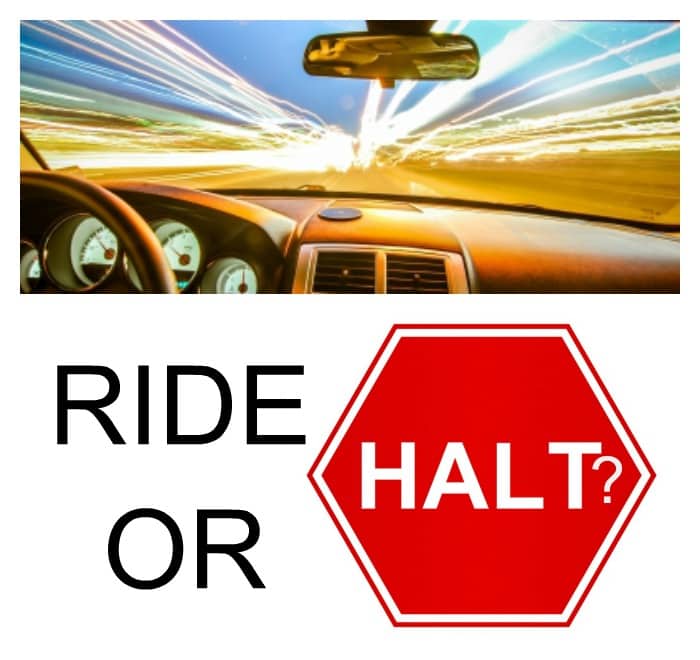One of the most useful things I ever did was to volunteer as a counselor on a telephone crisis hotline. I thought I was there to help others. It turns out that I was the one who gained the most. That experience impacts the way I converse with friends (and strangers) who tell me their problems.
Having been a crisis counselor, and having been trained on the RIDE model, influences the way I conduct myself on social media too.
Let’s start with the RIDE model.
R is for Relationship
The very first component of an interaction with someone in crisis is establishing a relationship. Especially in a phone conversation, the two of you can’t see one another and can’t read each other’s non-verbals, so it is even more important to establish rapport and trust.
I is for Identify the Problem
Any time you have entered into a conversation with someone when there is an expectation on their part that you are going to help them, it is helpful to cut through some of the “noise” to determine what is the most pressing issue. Often, what the person says is their problem is more of a symptom.
D is for Deal with Feelings
It is so tempting to skip this step. People who have chosen to volunteer as counselors often do so because they want to fix things. Allowing someone to express their feelings, to let out their sadness, or to vent their anger, is a critical part of the process.
E is for Explore Alternatives
You have a rapport with each other, you have a sense of the primary problem, and your caller has been able to express their feelings and let off some steam. Once that has all been done, it is time to explore alternatives. With someone in crisis, it is often true that they see alternatives that they were blind to once they have done steps one, two, and three. Perspective is a good thing.
Social media didn’t exist when I was a crisis counselor. People had relationships either in person, on the phone, or by letter. Now that we have so many electronic ways to get to know one another, our interactions are in jeopardy of coming to a grinding HALT when they could RIDE together instead:
H is for Hesitant to Engage
I am a social media nut but I know that it is easy to let quick social media interactions replace the hard work involved in really establishing relationships with people. A “we should have lunch” that never quite happens, a text or phone call to say “you sounded frustrated in that last status update,” an old-fashioned conversation can make someone’s day.
A is for Avoidance
It takes mental energy to focus on what someone is really saying. 140 characters in a tweet only scratches the surface. A Facebook status is someone’s “best face.” Don’t people in our lives deserve our undivided attention for at least a few minutes?
L is for Losing Interest
I frankly get a little tired of the frequent (and, admittedly, humorous as well as true) references on social media to how quickly we switch gears to the next shiny thing (have you seen a reference to “Squirrel!” at least once this week?). Relationships are about sharing the excitement of the novel as well as the monotony of the mundane. Stay on task. You would want someone to do that for you, wouldn’t you?
T is for Telling Instead of Asking
As a parent, I fastidiously avoid telling my children what to do (on the premise that when the idea goes south it will be my fault). Adults shouldn’t do that either — people have a better chance of succeeding at resolving their problems if it was their idea in the first place. It’s the skillful and caring friend who takes the time to help them navigate their way toward their own resolution.
Where will your road take you? Will you go for a RIDE or screech to a HALT?
Photo Credits: WWW image, RIDE image




Great post. I love the RIDE model and teach it to all staff at my work, to use with one another as well as there clients. Your HALT acronym encapsulates much of what goes wrong with communication these days – well said.
Thanks, Barbara!
Morning, Paula:)
Thanks for the trip down memory lane with the RIDE and HALT models. They are excellent tools for helping us create positive and helpful relationships and can be widely applied.
Great post!
John
Thank you, John!